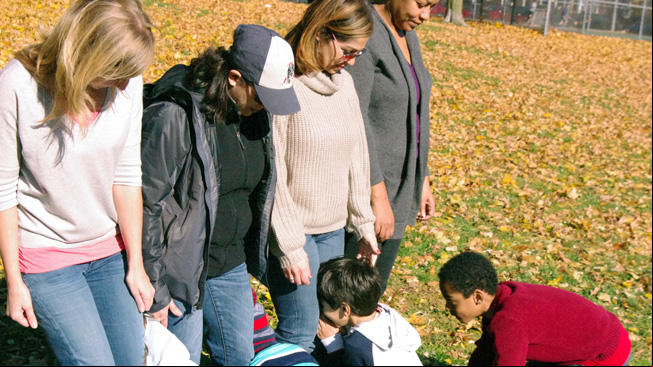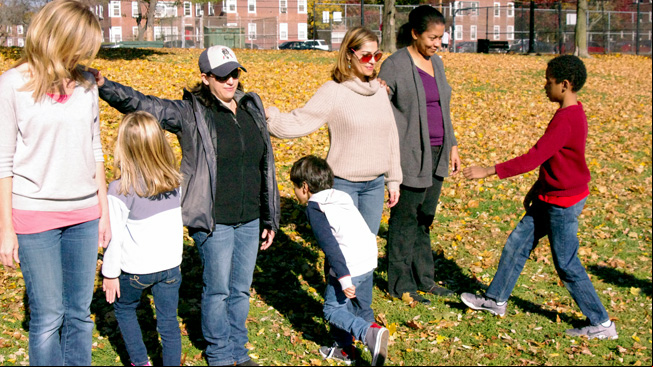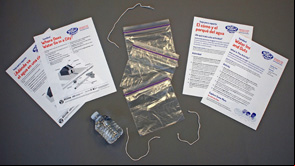Water Ins and Outs 401a32
4v85p
What Is This Activity? 1246j
What can water through? Families model and test surfaces that absorb water and those that don’t. Families also observe how water es through plants and human skin.
Introduction 591p71

Learning Goals 5b558
Big Science Idea: c5a44
- Water es through grassy surfaces, soil, plant leaves, and human skin because they have tiny holes. Water flows or puddles over solid surfaces like pavement.
Skills kids will use to investigate it: p2b2q
Model how paved surfaces block rainwater and soil lets water through
Observe and compare water flow on paved and grassy surfaces and through plant leaves (transpiration) and human skin (sweating)
Define and communicate solutions to a problem: Paved surfaces can make rain and melted snow flood a city
How Do You Get Ready? 6n3xp
Read the activity and gather the materials.
Print out one copy per family of the “Water Ins and Outs” and the “Where Does Water Go in a City” handouts.
Scout out a space with both pavement and grass or dirt. Make sure there are bushes or plants with leaves nearby. Your program’s yard, a park, or a playground will do.
Troubleshoot safety concerns (traffic, poison ivy, sharp objects, etc.).
If you don’t plan to show “The Hidden Alligator Mystery” video that is paired with this activity on the website, watch it ahead of time and jot down concepts to share with families during the activity.
Warm-up 5–10 minutes 6dc6l
(Science Skills: Model how paved surfaces block rainwater and soil lets water through)
Falling Raindrops. In an open space outdoors, divide families into two teams, the Raindrops and the Ground. (You may want the kids to be the Raindrops.)
Position the teams about 20 yards apart.
The Ground team stands in a line shoulder to shoulder. Explain that they are like a solid, paved surface (e.g., asphalt) with no openings.
On your signal, the Raindrops “fall” by running toward the Ground team. Each Raindrop tries to through “the asphalt” without touching it. Impossible! They have to stop (“puddle”) or divert (“stream” right or left around either end of the line).
Repeat the game, but this time Ground team models soil. They open holes by placing their right arm on the shoulder of the person next to them. The Raindrops can now slip through those spaces.
Discuss: How does this game remind you of raindrops falling to the ground? (On hard solid surfaces such as streets, sidewalks, and parking lots, rain can’t through, so it either puddles in place or streams away. Rain can slip through soil, which has tiny holes.)
Activity 30–40 minutes 191n4b
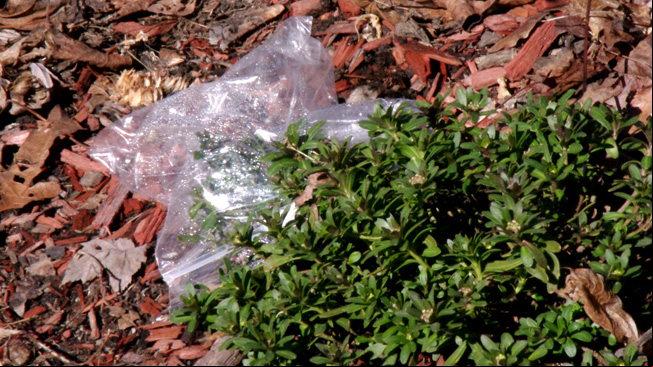
Water Ins and Outs 401a32
(30–40 minutes)
(Science Skills: Observe and compare water flow on paved surface and soil, and through plant leaves (transpiration) and human skin (sweating)
out the “Water Ins and Outs” handout and materials. Review the activity with families.
Have families predict what they think will happen. They will discover the answer later in the activity. (Water droplets form in the bags. Note that it can take 30 minutes or so for water droplets to form in the bag, depending on the plant, how wet the air is, and the temperature. Heat speeds up transpiration—water vapor flowing out of the plant through the leaves.)
Tell families to follow the directions on the handout, beginning with wrapping a bag around the leaves of their choice. Move from family to family to answer questions and offer .
While the baggies are collecting droplets and the poured water is drying up, have the group play shadow tag for 10 to 15 minutes to work up a sweat. The goal is for the person named “It” to tag someone else “It” by stepping on his or her shadow. Players must stay in the sun—no hiding in shaded areas.
Ask: Does your skin let water out? (Yes! Sweat flows out of skin.) What will happen to the sweat? (It will dry up—or evaporate, turning from water to water vapor.) Explain that when sweat dries up, it evaporates and turns into water vapor. The water vapor takes heat away with it, making you feel cooler. Wind speeds up the process. Have families wave a sweaty arm in the wind, blow on it, and use the handout to fan their faces. Ask: How does that feel?
Tell families to check their plastic bags. Ask: Which bags fogged up? Which ones have tiny water droplets? Were your predictions accurate?
Have them compare their sweat to the bagged leaves. Explain that, like sweat through skin, water es out of the leaf and evaporates, or turns to water vapor (a gas). The bag traps the water vapor, which cools and condenses, or turns back into liquid. Wonder aloud: Why do plants let water escape? Don’t they need water to survive? (Same reason we sweat—to cool off!)
Have kids look at and touch what they’re wearing. Ask: Which fabrics let sweat through and so feel damp? Which ones keep water out, trapping sweat on the skin? Why are rubber boots and plastic raincoats waterproof? (They don’t have tiny holes that let water through.)
Wrap-up 5–10 minutes 4x5t3l
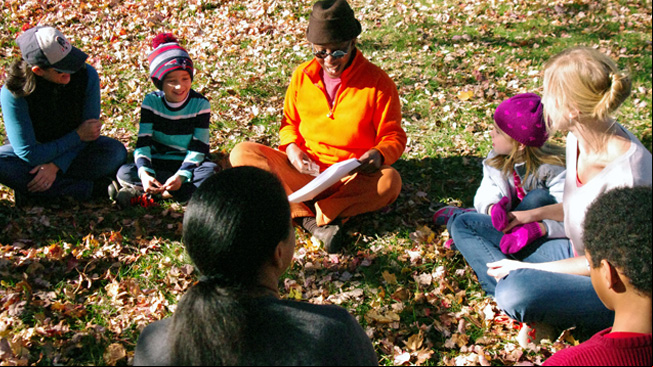
(Science Skills: Define and communicate solutions to a problem: Paved surfaces can make rain and melted snow flood a city or town)
Ask kids to share their favorite part of the activity.
Look around: What hard surfaces don’t absorb water? How many can you name? (Streets, stoops, parking lots, roofs, glass skyscrapers, metal benches, etc.)
Define a problem: Why can lots of rain be a problem for cities and towns? (Too much water can flood places where it can’t soak in.) What could cities and towns do about it? If kids struggle for ideas, remind them that soil absorbs water (plant more green spaces, have less pavement). What could carry the extra water out of the city? Let kids get creative here in imagining structures or vehicles or other water-carrying or water-storing systems.
Encourage families to take home the “Water Ins and Outs” handout to repeat the activity in their neighborhoods. Point out the “Where Does Water Go in the City?” activity that is on the handout. If you wish, give them the “Explore Water Around You” handout to provide them with more ideas on how to continue investigating water together.
Explore Some More 736219
Where Does the Snow Go? 4s184w
Watch this short video in which Plum sings a song about what happens to snow in the city after a storm. Ask: Why can’t the snow soak through concrete? (The pavement is hard and solid and the snow is in solid form—frozen water.)
